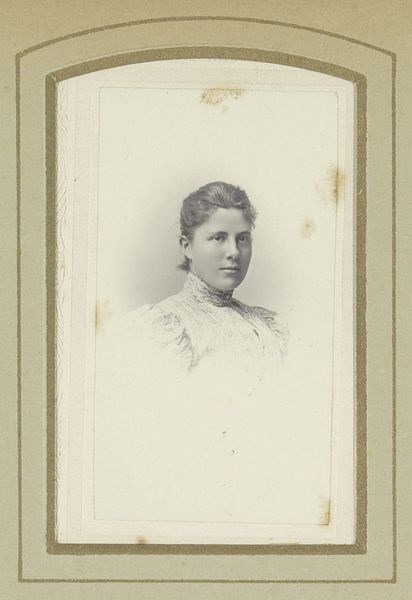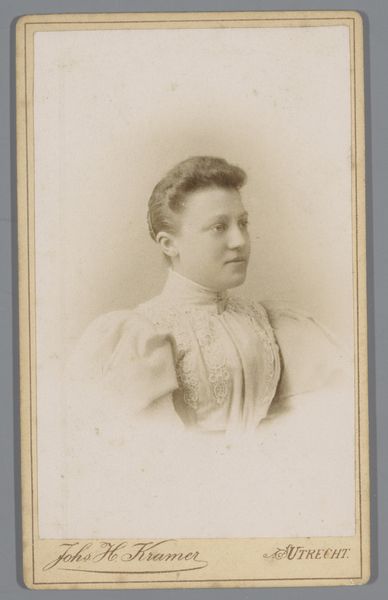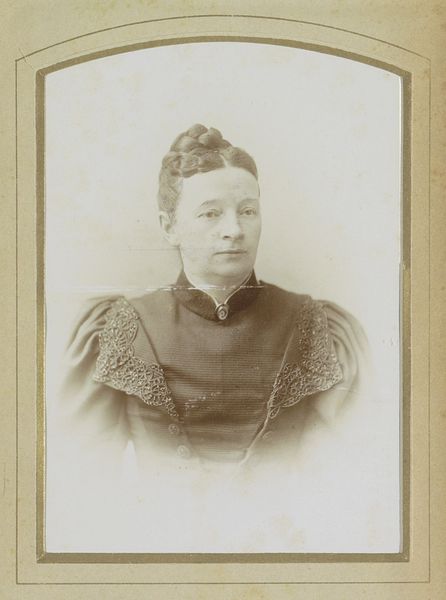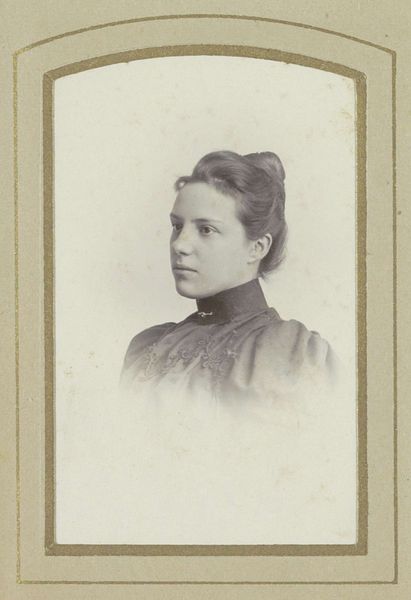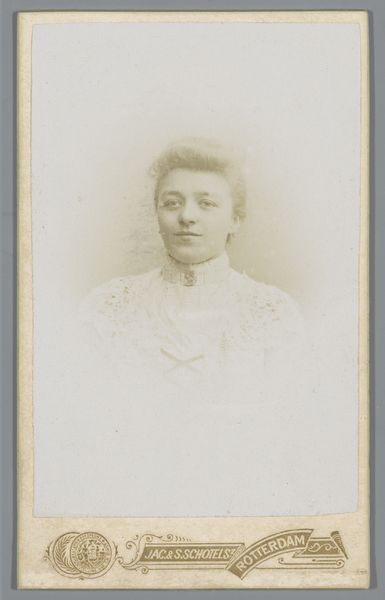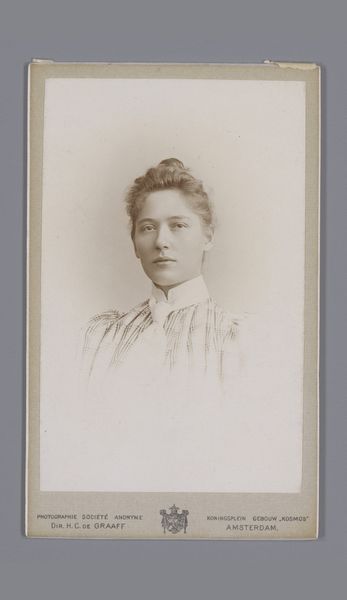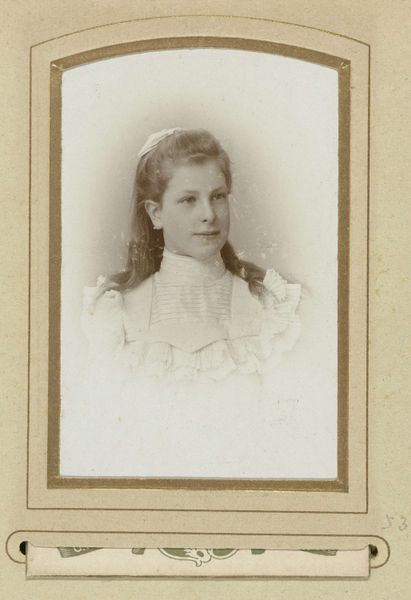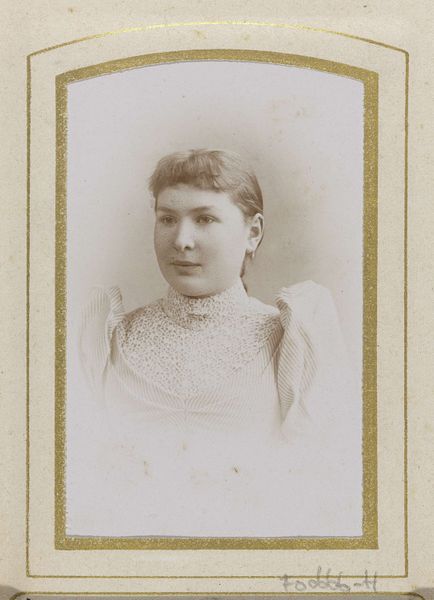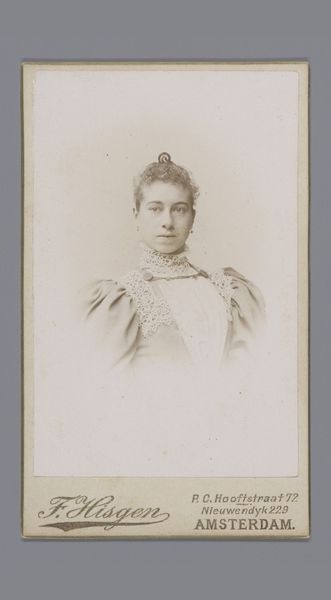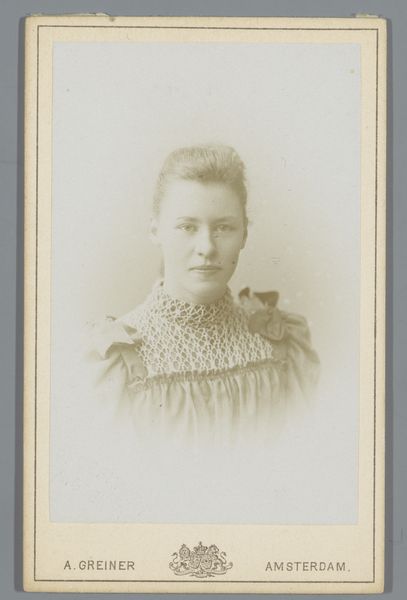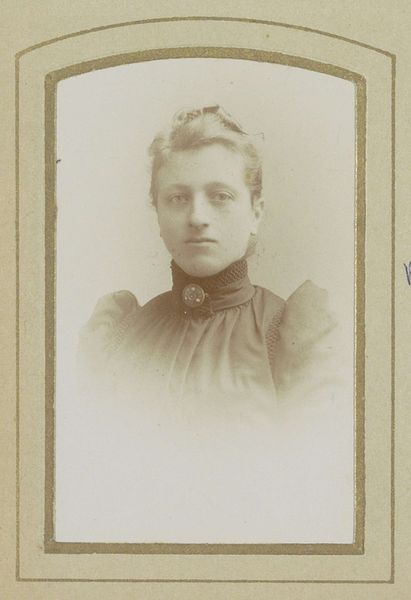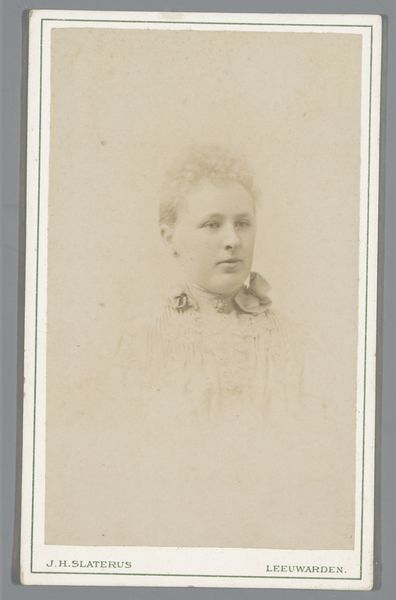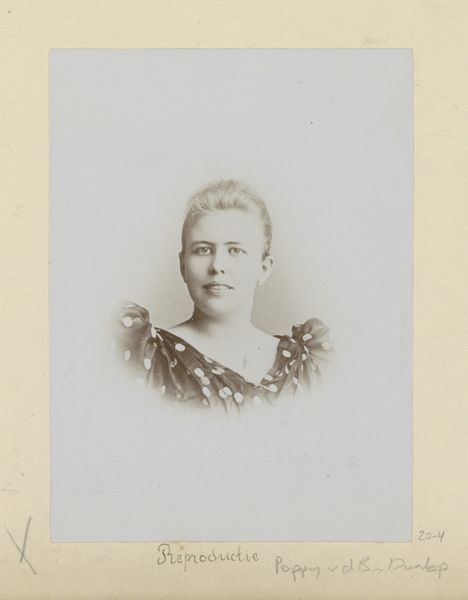
photography
#
portrait
#
photography
#
realism
Dimensions: height 102 mm, width 63 mm
Copyright: Rijks Museum: Open Domain
Editor: Here we have "Portret van Heleen Waller," a photographic portrait dating from between 1892 and 1897 by Koene & Büttinghausen, housed in the Rijksmuseum. It strikes me as such a formally composed image, almost austere. What do you see when you look at it? Curator: This portrait, while seemingly straightforward, sits within a fascinating historical context. The rise of photography democratized portraiture, shifting it from the realm of the wealthy to a wider segment of society. It reflects changing social values and aspirations of the rising middle class in the Netherlands during the late 19th century. Think about the studios themselves – what kind of experience do you think they were crafting for their customers? Editor: So, beyond just documenting someone’s appearance, a photo like this would also represent access to certain social circles, perhaps even aspirational identity building. Curator: Exactly. The pose, the dress – everything is carefully constructed to project a certain image. Also, consider how the Rijksmuseum's collecting practices shape the understanding of photography as art, elevating specific images and narratives above others. Why this image and not another? What statements are we making when we show this photograph? Editor: That's a really interesting point. It's easy to see a portrait and not think about the layers of selection and interpretation involved in even putting it on display. I hadn't thought about that at all. Curator: It is always good to think of who gets remembered, why, and who does the remembering. This image, seemingly simple, can open up a broader discussion of how photography was used, collected, and how museums play a role in shaping cultural memory. Editor: Absolutely, seeing this photo through a socio-historical lens has made me rethink how I approach portraiture. It's not just about who is in the frame, but the power dynamics at play and the messages being communicated.
Comments
No comments
Be the first to comment and join the conversation on the ultimate creative platform.
